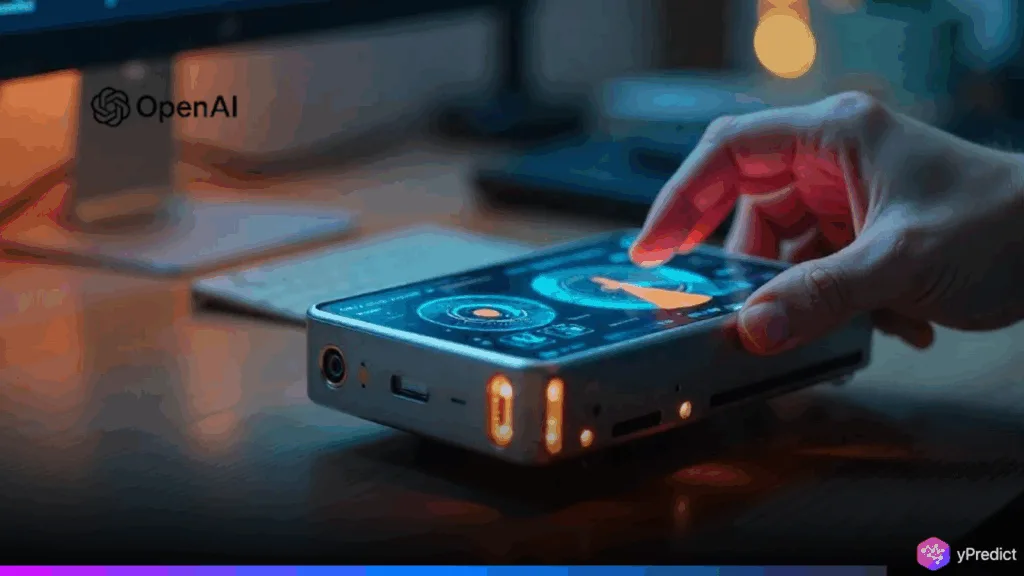
OpenAI has joined forces with iconic Apple designer Jony Ive to create a dedicated AI device. Their goal: build a new kind of gadget designed specifically for generative AI, not just retrofit current tech. I’ve criticized legacy hardware as outdated, arguing that the future demands something purpose-built. While full details are still under wraps. OpenAI CEO Sam Altman called the prototype “the coolest piece of technology that the world will have ever seen.” OpenAI made a multi-billion-dollar investment in Ive’s startup to bring this vision to life. Signaling a significant shift in how humans may interact with AI tools going forward.
A New Era of AI-First Hardware Emerges
The concept behind OpenAI’s new device stems from a broader realization. Smartphones and laptops weren’t built with AI at their core. Now, with generative AI integrated into daily tasks, there’s growing momentum for devices. That treats AI as the foundation, not an add-on. Ive’s partnership with OpenAI is part of that shift. Though little is known about the prototype, reports suggest it won’t include a screen, nor will it resemble wearables like smartwatches or brooches. Instead, it may represent a new category of ambient, AI-first hardware.
Altman’s praise reinforces the ambition behind the project. Without revealing specs, he described the device as possibly the most innovative product ever built. OpenAI’s move also reflects a belief that personalized AI experiences need more than just apps; they require rethinking the hardware interface entirely.
Meanwhile, OpenAI is not the only one. A similar idea is experimented with by competitors such as Meta, Google. Meta is spending enormous amounts of money on AI tools, and Google is working on the development of AI-enabled mixed-reality glasses. Amazon, as well, is in the ongoing process of further developing the Amazon-exploring items that precede its Alexa-controlled gadgets to accommodate the conversational AI more adequately. The overall trend of these actions suggests that there is a shift in industries that seek to repackage the way people relate to machines in the era of AI.
Meta, Google, and Amazon Join the AI Device Race
While OpenAI pushes forward with Ive, Meta is making bold moves of its own. The company has reportedly invested billions in AI and is developing what CEO Mark Zuckerberg refers to as “superintelligence.” Hardware has its component in this strategy as Meta is trying to bring AI to its platforms and devices. In the meantime, Google is experimenting with audio search capacities based on Gemini AI. And is rumored to be involved in the development of fresh mixed-reality glasses. Such innovations are meant to bring about a more unspoken approach to AI interactions. Google is taking the AI representing life toward more immersive, voice-based, or wearable formats to make it a natural web presence in our lives.
Amazon has not been left out, as it keeps on enhancing the ability of Alexa in its Echo speakers and smart displays. These gadgets are the latest home products of the company, and they view them as a fundamental interface point of AI communication. Since customers feel more relaxed interacting with voice assistants. All these efforts reflect one thing: tech giants believe AI needs its own dedicated hardware. Just as the smartphone defined the mobile era, companies now seek the “AI-native” device that will shape the next digital revolution. Whoever succeeds first may set the standard for AI-human interaction for years to come.
Redefining Human-Tech Interaction Through AI Devices
As AI reshapes how we access information and perform tasks, leading companies are racing to build the ideal AI device. OpenAI’s partnership with Jony Ive hints at a future where AI is not just an app but embedded into its own hardware form. With Meta, Google, and Amazon also betting on AI-integrated gadgets, the competition is fierce. The focus now is on devices that understand context, respond naturally, and fit seamlessly into daily life. If OpenAI and Ive’s prototype lives up to the hype, it could kickstart a new chapter in consumer technology, one where AI doesn’t just assist but defines the experience.






